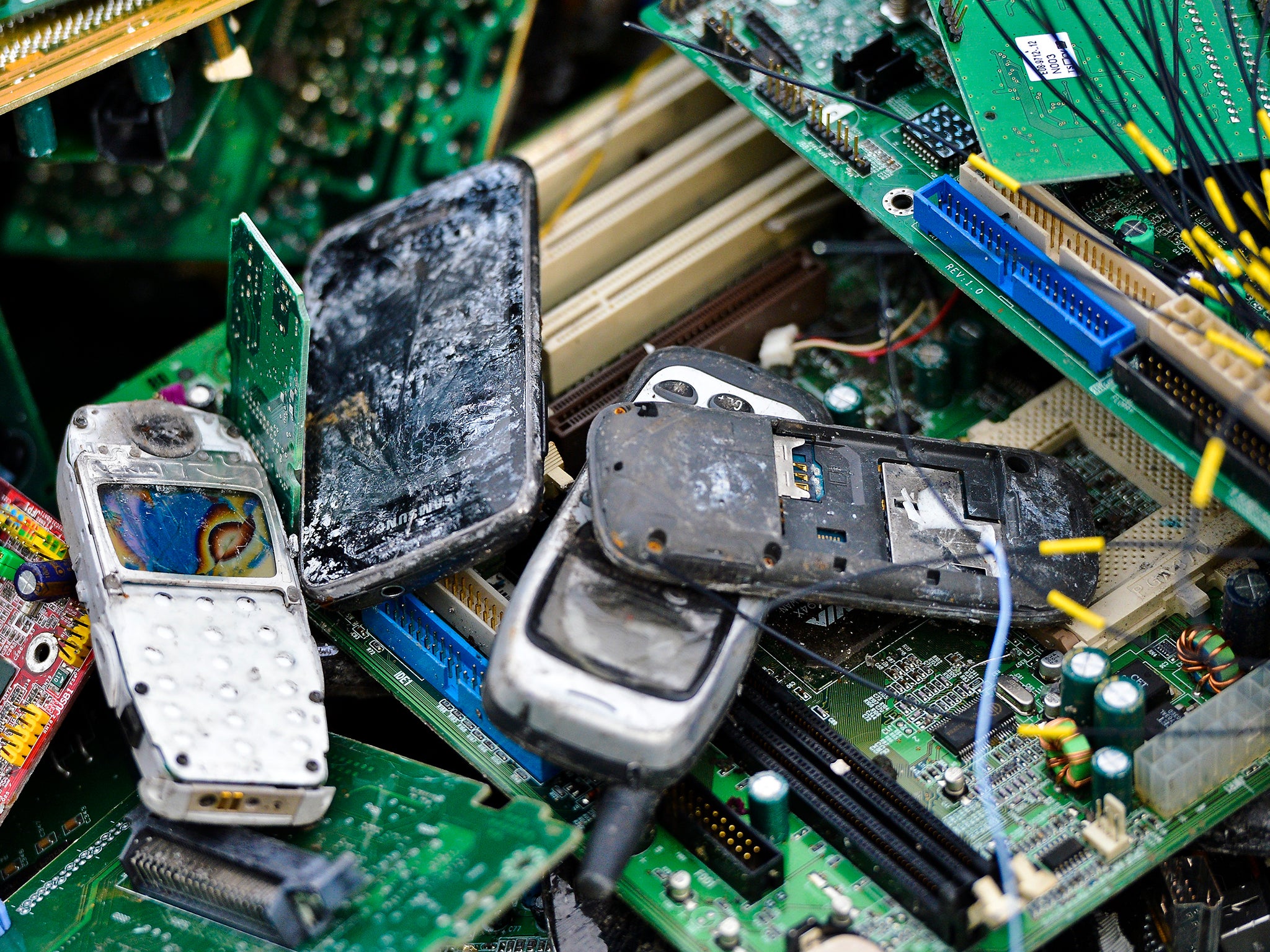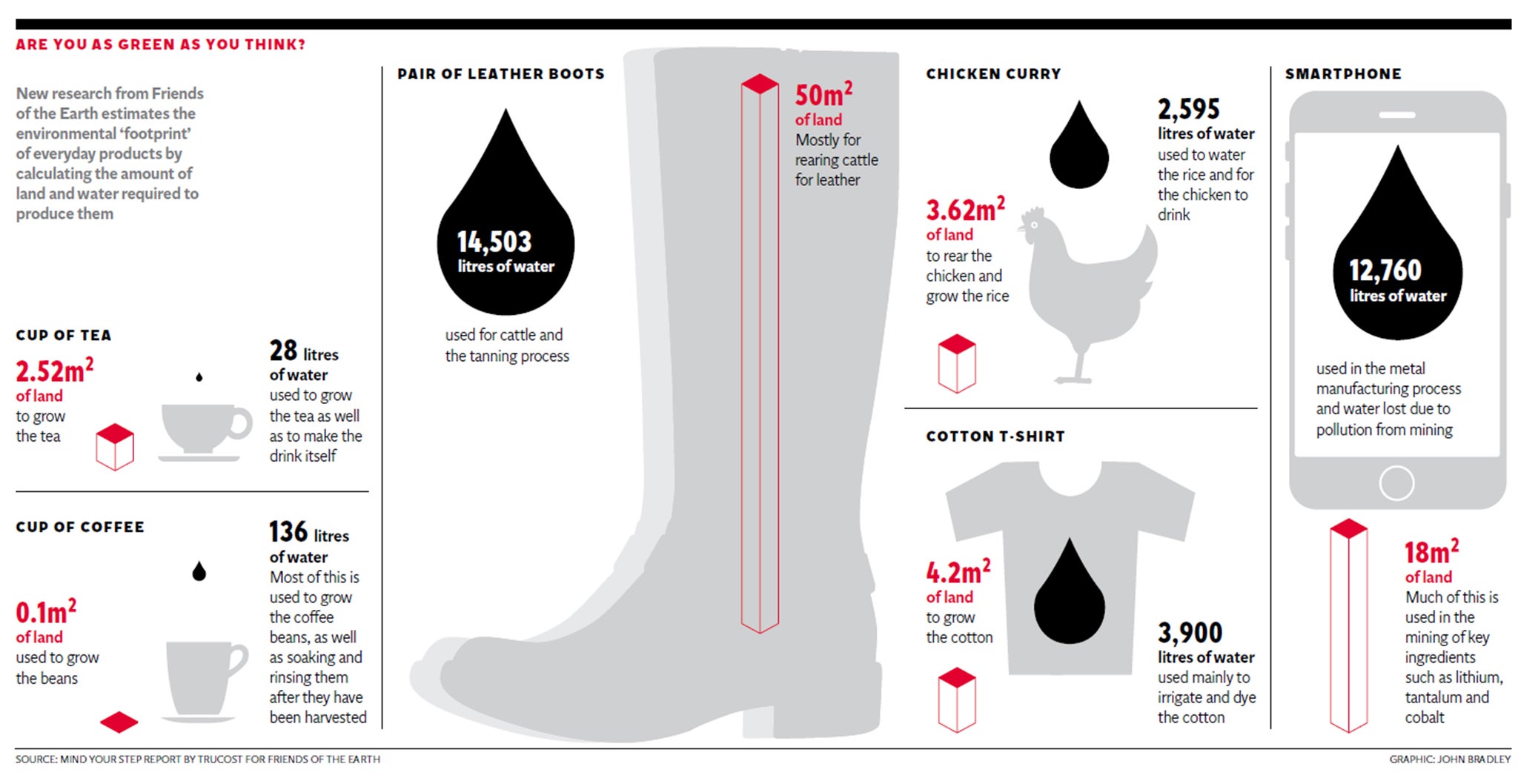Revealed: The shocking amount of resources needed to make products such as mobile phones, coffee and T-shirts
Smartphones, the report claimed, use nearly 13 tons of water when being manufactured

Your support helps us to tell the story
From reproductive rights to climate change to Big Tech, The Independent is on the ground when the story is developing. Whether it's investigating the financials of Elon Musk's pro-Trump PAC or producing our latest documentary, 'The A Word', which shines a light on the American women fighting for reproductive rights, we know how important it is to parse out the facts from the messaging.
At such a critical moment in US history, we need reporters on the ground. Your donation allows us to keep sending journalists to speak to both sides of the story.
The Independent is trusted by Americans across the entire political spectrum. And unlike many other quality news outlets, we choose not to lock Americans out of our reporting and analysis with paywalls. We believe quality journalism should be available to everyone, paid for by those who can afford it.
Your support makes all the difference.The sheer scale of the resources used to make everyday products such as coffee and T-shirts – often in parts of the world where the environment is under strain – is laid bare in a new report, showing that nearly 13 tons of water is needed to make a smartphone.
The “resource footprint” report, commissioned by Friends of the Earth, finds that water and land use can be reduced considerably when companies consider the environment in their manufacturing processes. But all too often, it says, producers pay scant regard to the strain they are putting on crucial resources, putting extra stress on an environment that is already stretched to the limit.
One example is leather boots. The research, conducted by the environmental data researchers Trucost, calculates that making a typical pair of leather boots requires 14.5 tons of water. However, where leather tanneries dump untreated chemicals into the environment – as is common in tanning districts such as the Hazaribargh region of Dhaka, Bangladesh – the figure rises to 25 tons because of the water pollution the process causes.

“The snug fit of that phone in your pocket or the crumpled heap of boots in the corner masks the breathtaking amounts of land and water required to make our favourite products,” said Friends of the Earth’s resource use campaigner Julian Kirby. “The good news is that armed with land and water footprint information, companies can redesign products and business models, to save cash and tread more lightly on the Earth.”
Friends of the Earth is calling for the next government to commit the Treasury to reviewing the economic and environmental implications of the UK’s dependence on natural resources. The campaign group also wants it to set up an office of resource management to ensure the findings translate into policies for resource efficiency across the country.
The research is the most thorough to be conducted into the footprint of everyday items. It looks at how much land is used as well as the amount of water – which it breaks down into three types: blue (freshwater), green (rainwater) and grey (water lost to pollution).
Read More: Compare providers and find the best deals with our Mobile Phone Deals page
Join our commenting forum
Join thought-provoking conversations, follow other Independent readers and see their replies
Comments